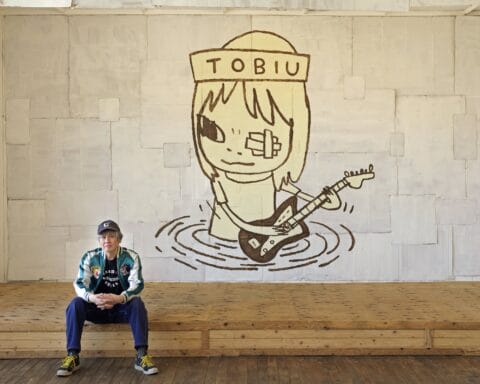Sol LeWitt, an iconic figure in contemporary art, is best recognized for his pivotal role in the emergence and growth of conceptual art during the 1960s and 1970s. Born in 1928 in Hartford, Connecticut, LeWitt embarked on his artistic journey which saw a dramatic shift in the perception of what constitutes art. He studied at Syracuse University and briefly served in the Korean War before settling in New York City. It was here that LeWitt’s career took shape, blending his minimalist tendencies with a burgeoning interest in concept over visual representation.
Conceptual art, as its name suggests, prioritizes the ideas or concepts behind the work of art rather than its aesthetic or material aspects. This art movement gained momentum in the mid-20th century, challenging traditional views of art making and appreciation. Pioneers like LeWitt emphasized that the intellectual component of art is paramount, and the artwork itself often exists as a set of instructions or a proposal rather than a tangible piece. This approach questioned the very nature of art, pushing boundaries and expanding the horizons of contemporary artistic practice.


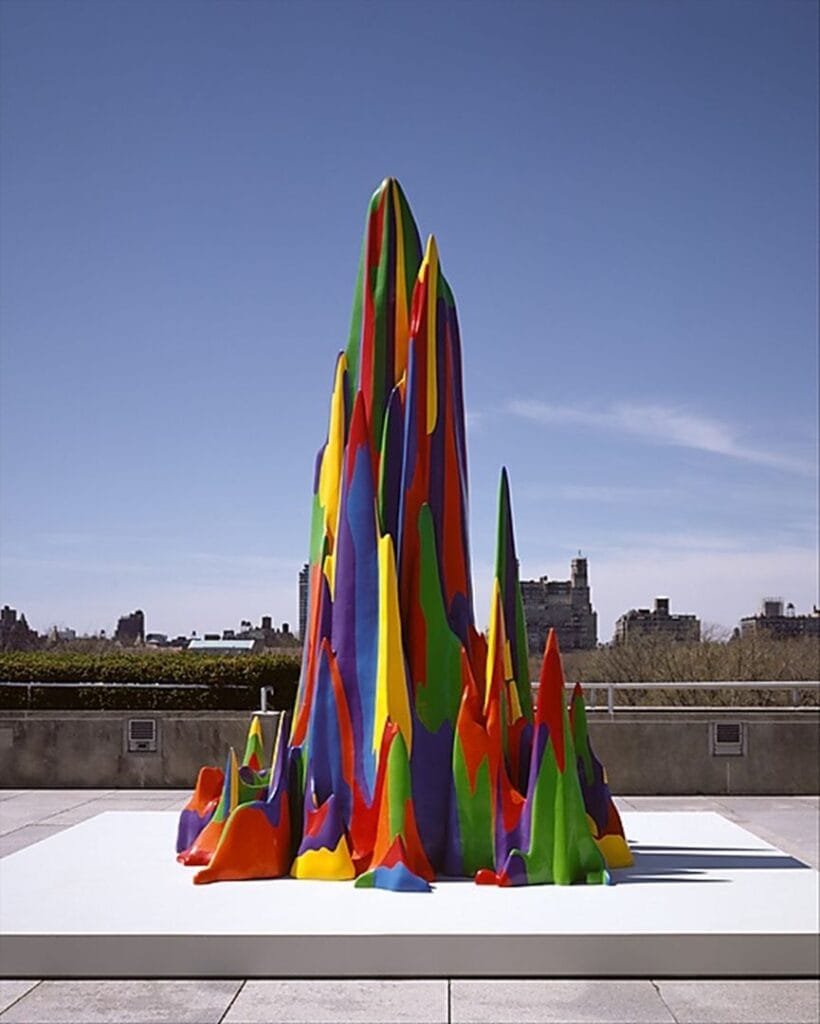
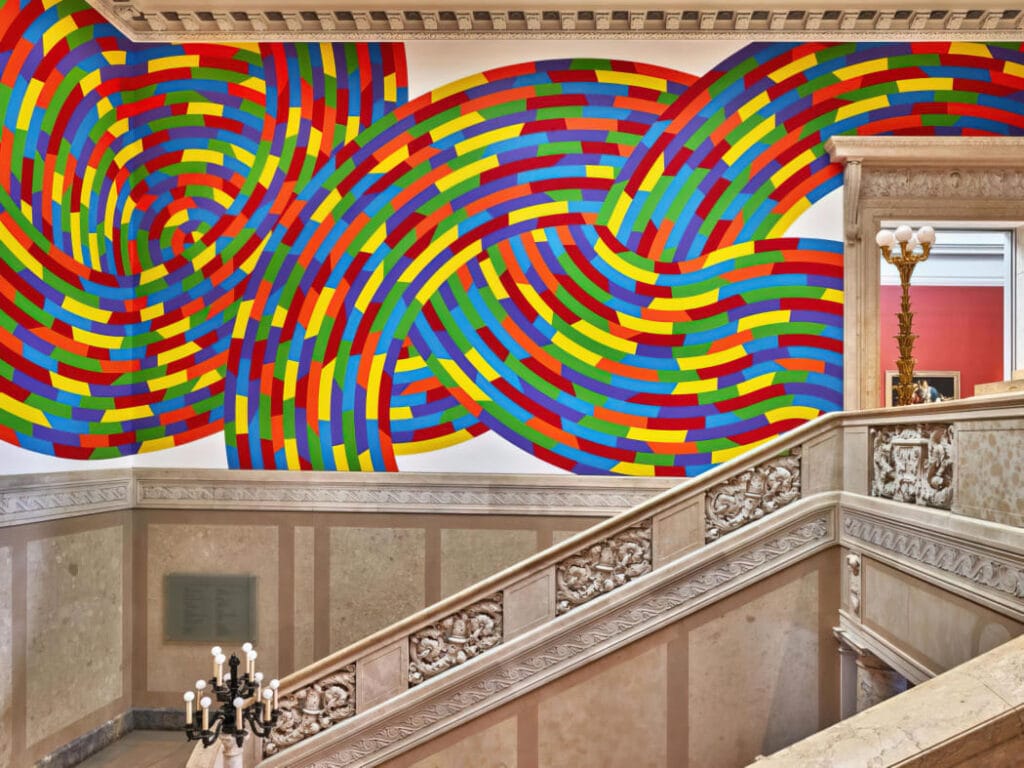
LeWitt’s work is characterized by geometric forms and systematic patterns, reflecting his deep commitment to the conceptual art movement. His ‘Wall Drawings’ are perhaps his most famous contributions, which consist of detailed instructions on how to execute the artwork, often leaving the actual drawing to be completed by others. This method underscores the critical notion that the artist’s idea supersedes the physical act of creation. Indeed, LeWitt’s art challenges viewers to think beyond the visible, engaging with the underlying principles and concepts that define his work.
Sol LeWitt’s influence on conceptual art cannot be overstated. By placing ideas at the forefront of his artistic endeavors, he redefined the roles of both the artist and the viewer. This exploration of thought over form forms the bedrock of his legacy and sets the stage for a deeper, more nuanced examination of his contributions to contemporary art.
Conceptual art, particularly embodied by the work of Sol LeWitt, invites a philosophical exploration that departs from traditional aesthetic values. At the heart of conceptual art lies the premise that the ‘concept’ or ‘idea’ behind an artwork supersedes its physical manifestation. This approach transforms the experience of art, prioritizing intellectual engagement over visual consumption. LeWitt’s assertion, “The idea becomes a machine that makes the art,” serves as a cornerstone for understanding this paradigm. By equating the concept to a mechanical process, LeWitt underscores the autonomy of ideas in generating artistic value independent of execution or craftsmanship.
This philosophical shift draws significantly from linguistic theories, notably those of Ludwig Wittgenstein. Wittgenstein’s exploration of language and meaning—where the significance of words is derived from their usage within a specific ‘language game’—mirrors how ideas are operational within conceptual art. Just as meaning is contingent on context in linguistic analysis, the significance of a conceptual artwork arises from its conceptual framework. These insights challenge the conventional focus on the visual and material aspects of art, instead fostering an appreciation for intellectual processes. Sol LeWitt, in his seminal writings, crafts a narrative where the ideational process is paramount, aligning closely with Wittgenstein’s view of language.
Furthermore, this intellectual tradition is bolstered by the works of other key theorists and philosophers who have influenced contemporary art. The impact of Dadaism, with its emphasis on spontaneity and anti-art sensibilities, amplifies the notion that the artist’s intent and concept are the lifeblood of the creative act. Similarly, the theories of Roland Barthes and his declaration of the ‘death of the author’ echo in conceptual art’s embrace of viewer interpretation as integral to the artwork’s meaning. LeWitt’s philosophy and his declaration cement a crucial understanding: artworks are vessels for ideas, and these ideas possess a robust, almost tangible existence within the art world.

Deconstructing LeWitt’s Wall Drawings
Sol LeWitt’s wall drawings stand as a cornerstone of his contribution to contemporary art, reflecting his innovative approach that challenges conventional artistic methodologies. As one delves into these works, the spectrum of complexity becomes evident, ranging from deceptively simple geometric shapes to intricately complex compositions. What sets LeWitt’s wall drawings apart is not merely their visual impact but the unique process of their creation.
LeWitt conceived his wall drawings as conceptual frameworks encapsulated within a set of written instructions. These instructions, sometimes as precise as mathematical equations and at other times more open-ended, are to be actualized by draftsmen who meticulously follow LeWitt’s guidelines. This process raises profound questions about the nature of authorship and creativity in art. By relinquishing direct control over the execution, LeWitt elevated the concept over the physical act of creation, positing that the idea itself is the true essence of art.
The method of creation employed in LeWitt’s wall drawings can be seen as a deliberate subversion of traditional art-making techniques. Historically, the artist’s hand and direct manipulation of the medium were crucial indicators of authenticity and value. LeWitt, however, relegated the realization of his vision to others, thereby democratizing the artistic process and blurring the lines between artist and artisan. This act of delegating the execution not only challenges the conventional artist’s role but also underscores the importance he places on the intellectual and procedural dimensions of art.
The implications of LeWitt’s approach are manifold. Philosophically, it prompts a reevaluation of what constitutes the artwork—is it the final visual product, the conceptual blueprint, or perhaps the collaborative process itself? By focusing on the idea and its meticulous realization, LeWitt’s wall drawings encapsulate a radical shift toward a more inclusive understanding of art. In doing so, they invite viewers and participants alike to engage with art on a profound, cerebral level, embodying the essence of contemporary art’s introspective and exploratory spirit.


Analyzing LeWitt’s Modular Structures
Sol LeWitt’s modular structures stand as a testament to his groundbreaking contributions to contemporary art. These works are characterized by their repetitive geometric forms, often realized through minimalist aesthetics. At their core, LeWitt’s modular structures embody an intricate balance between simplicity and complexity. They are predicated on systematic permutation and combination, a principle that fundamentally challenges traditional notions of art.
By utilizing basic geometric units—such as cubes and grids—LeWitt orchestrates a visual symphony of form and space. His approach is not merely about what is visually present, but also about the conceptual framework governing the arrangement of these structures. Each piece serves as a part of a larger dialogue, where the act of repetition transcends mere duplication to explore the myriad possibilities of form variation.
The minimalist adoption visible in LeWitt’s sculptures strips away extraneous details, urging viewers to appreciate the underlying systems. Here, the beauty emerges from the methodical and often mathematical arrangements of shapes. By focusing on systematic processes, LeWitt allows the art to communicate through its inherent logic, offering a meditative experience as the viewer contemplates the meticulously organized forms.
LeWitt’s modular structures interact with space in ways that are both profound and thought-provoking. Their arrangement engenders a sense of infinite modularity, where each unit can theoretically continue ad infinitum. This endless permutation creates a spatial dialogue that questions the boundaries of the art itself. It invites observers to consider the potential of the pieces beyond their immediate configuration, suggesting a continuum that extends far beyond the physical limits of the gallery or installation site.
In essence, LeWitt’s modular structures embody a radical rethinking of art, where the process and idea behind the creation hold as much significance as the physical outcome. By deconstructing traditional artistic practices and embracing a systematic approach, Sol LeWitt redefined the possibilities of contemporary art, ensuring his work remains a pivotal point of reference in discussions of modern artistic expression.

The Role of Authorship and Originality in LeWitt’s Work
Sol LeWitt’s oeuvre significantly challenges traditional notions of authorship and originality in the realm of contemporary art. By conceptualizing a piece and then delegating its execution to others, LeWitt shifts the focus from the act of creation to the idea itself, redefining what it means to be the author of an artwork. This distillation of the artistic process underscores the primacy of the conceptual framework over the physical manifestation, which runs counter to historical paradigms where the artist’s hand was deemed paramount to the value of the piece.
LeWitt’s methodology, particularly his wall drawings, exemplifies this radical departure. These pieces, often rendered by assistants following the artist’s specific instructions, question the necessity of the artist’s direct involvement in the creative process. Consequently, the value of art becomes entwined not with the uniqueness of its execution but with the ingenuity of its underlying concept. This approach triggers a broader reflection within the art world regarding the essence of originality and the authentic artistic experience.
Moreover, LeWitt’s practice bears intriguing parallels to the philosophies of earlier conceptual artists like Marcel Duchamp. Duchamp’s presentation of everyday objects as art—a concept famously encapsulated in his readymades—similarly disrupts conventional distinctions between high art and banal objects. Both artists provoke a dialogue about the locus of artistic value, dislocating it from the tangible artifact to the intellectual or ideological proposition.
In redefining these boundaries, LeWitt’s art articulates a vision where the conceptual genesis is paramount, encouraging viewers to engage with the artistic idea rather than merely the physical form. This paradigm shift prompts a re-evaluation of the criteria by which art is judged, appreciated, and valued, compelling the art community to reconsider entrenched definitions of creativity and innovation.
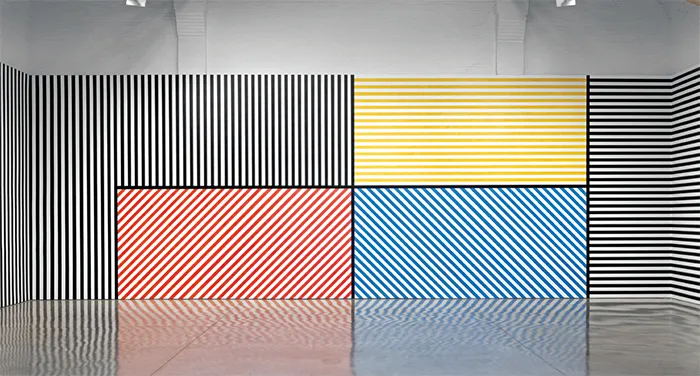


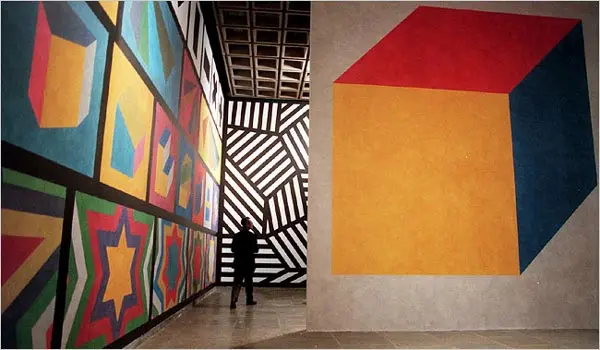

LeWitt’s Influence on Contemporary Art
Sol LeWitt’s contributions to contemporary art are monumental, serving as the cornerstone for various art movements and practices that followed his conceptual frameworks. His dedication to the concept over execution has fundamentally redefined art, advocating that the idea itself is the essence of the artwork. This shift in perception has inspired countless artists to explore new methodologies, emphasizing the intellectual process over traditional craftsmanship.
LeWitt’s influence can be seen in the works of several contemporary artists. For instance, Lawrence Weiner and Robert Barry, both prominent figures in the Conceptual Art movement, were directly inspired by LeWitt’s emphasis on the written instruction as art. Weiner’s text pieces and Barry’s thought-provoking structures resonate with LeWitt’s philosophy that art lies in the idea, not merely in its physical realization.
Moreover, the minimalist approach championed by LeWitt paved the way for artists like Ai Weiwei and Olafur Eliasson. Ai Weiwei’s installations often incorporate instructions and modular structures, allowing a fluid dialogue between the observer and the creation process. Similarly, Eliasson’s experiential art pieces engage audiences in a similar manner, focusing on perception and interaction, reminiscent of LeWitt’s volumetric and spatial explorations.
LeWitt’s legacy continues to challenge the norms of artistic practices today. His innovative use of seriality and systematic approaches has influenced digital and new media artists, who employ algorithmic and generative techniques to create art. These practices echo LeWitt’s avoidance of spontaneity and his meticulous planning, highlighting his enduring relevance in the ever-evolving landscape of contemporary art.
In contemporary art circles, LeWitt’s principles are often referenced in academic discussions and practical applications. Art educators frequently utilize his modular structures and wall drawings as teaching aids, proving his methodologies remain pivotal in art education. Art institutions and galleries globally continue to exhibit his work, ensuring that new generations of artists and viewers are continually engaged with his transformative ideas.

Critical Reception and Controversy
The critical reception of Sol LeWitt’s work has been multifaceted and dynamic, fluctuating between acclaim and criticism since his emergence in the contemporary art scene. His pioneering role in conceptual art, a movement characterized by its prioritization of ideas over traditional aesthetic and material concerns, has been a focal point of both praise and controversy. LeWitt’s work, often consisting of geometric forms and intricate wall drawings, has sparked substantial debate among critics, art historians, and the broader public, reflecting a broader tension between conceptual and traditional art forms.
LeWitt received early acclaim for his groundbreaking approach, particularly for the intellectual rigor and radical simplicity that his work embodied. Notable exhibitions, such as his 1967 solo show at the Dwan Gallery in New York, played a significant role in establishing his reputation. Critics lauded these exhibitions for their innovative challenge to conventional notions of authorship and creativity in art. Eminent art critic Lucy Lippard cited LeWitt’s work in her influential essay “The Dematerialization of Art,” which underscored the importance of ideas over physical objects in contemporary art.
However, LeWitt’s approach did not escape criticism. Detractors have questioned the aesthetic value and emotional depth of his art, arguing that it lacks the sensory engagement commonly found in traditional art forms. Some have criticized his reliance on assistants to execute his wall drawings, perceiving it as a diminishment of the artist’s hand in the creation process. This debate was particularly evident in the reactions to his work exhibited at the Museum of Modern Art’s 1978 retrospective, which drew polarized responses.
LeWitt also faced controversy in the interpretation and preservation of his art. The ephemeral nature of his wall drawings, intended for eventual removal or repainting, posed challenges for collectors and institutions. This paradox—creating art meant to be transient—has led to ongoing discussions about the conservation and authenticity of conceptual artworks.
Despite these controversies, LeWitt’s influence on contemporary art is undeniable. Critics and scholars continue to engage with his theoretical writings, such as his seminal “Paragraphs on Conceptual Art” and “Sentences on Conceptual Art,” which have been foundational texts for understanding the movement. His works are regularly featured in major international exhibitions, reinforcing his legacy as a central figure in the discourse of modern and contemporary art.
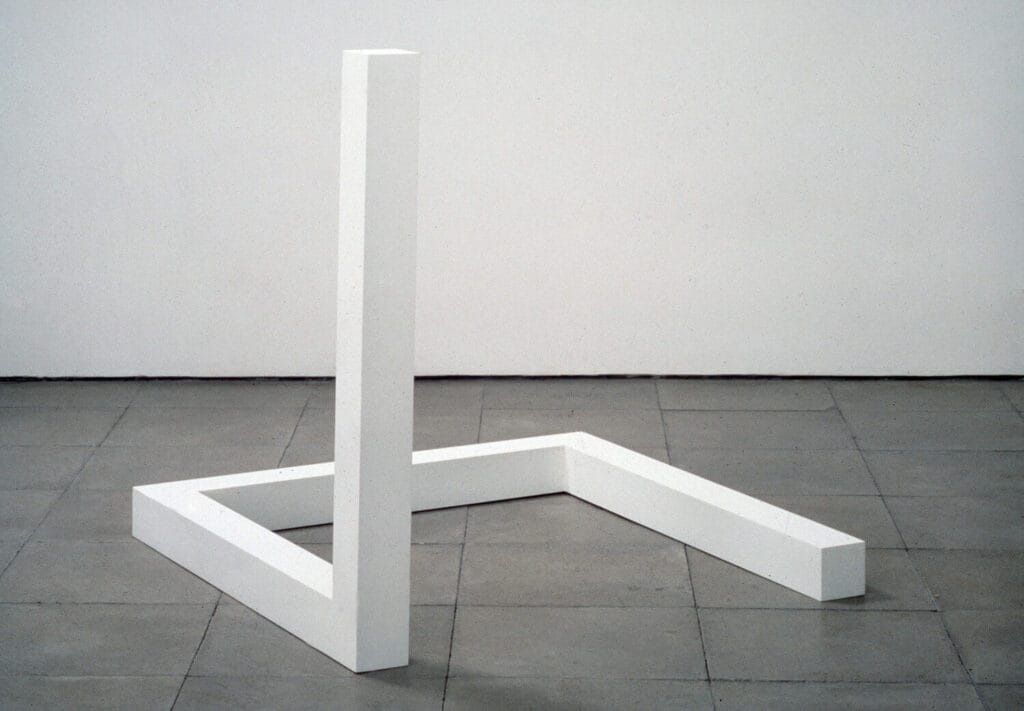
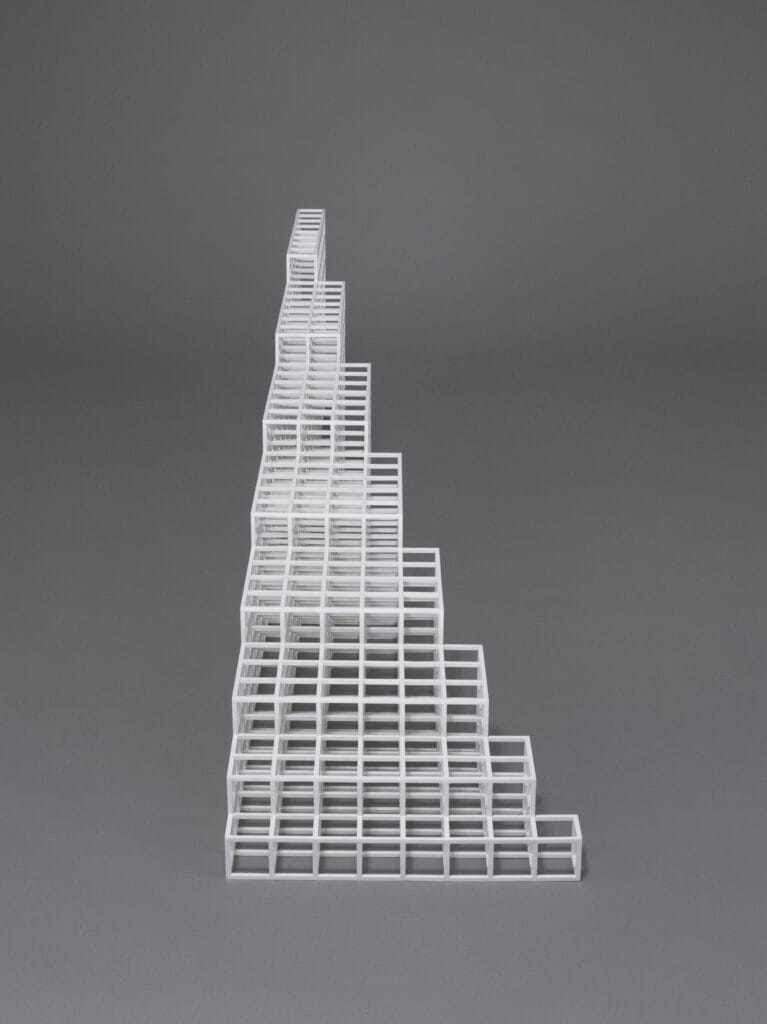



The Enduring Legacy of Sol LeWitt
Throughout this critical examination, we have delved into the multifaceted contributions of Sol LeWitt to the realm of contemporary art. His pioneering approaches to conceptual art have redefined artistic practices and philosophies, emphasizing the idea over the physical artifact. LeWitt’s procedural methodologies and rigorous structures challenge conventional perceptions of art, presenting a paradigm where instructions and concepts take precedence over tangible creations. Such innovative notions have left an indelible mark on the art world and continue to inspire new generations of artists.
LeWitt’s work raises enduring philosophical and artistic questions concerning the nature of creativity, authorship, and the artist’s role. His assertion that “the idea becomes a machine that makes the art” invites us to rethink the creative process and the interaction between artist, instruction, and execution. By doing so, LeWitt questions the traditional hierarchy in artistic production and prompts ongoing discourse about the essence of art itself.
Looking towards the future, conceptual art is likely to evolve, yet the foundational principles established by LeWitt will undoubtedly persist. His influence is apparent in the increasingly collaborative and interdisciplinary approaches within contemporary art practices. Artists today continue to explore and expand the boundaries established by LeWitt’s groundbreaking work, ensuring that his legacy endures and adapts to the complexities of our ever-changing cultural landscape.
LeWitt’s art remains compelling and relevant today, not only for its intellectual rigor but also for its profound simplicity and elegance. His ability to convey complex ideas through minimalistic forms and accessible mediums invites a broad audience to engage with and reflect upon his work. This accessibility, paired with the depth of his concepts, secures Sol LeWitt’s position as a pivotal figure in contemporary art history, whose contributions will undoubtedly continue to inspire and provoke thought for generations to come.


